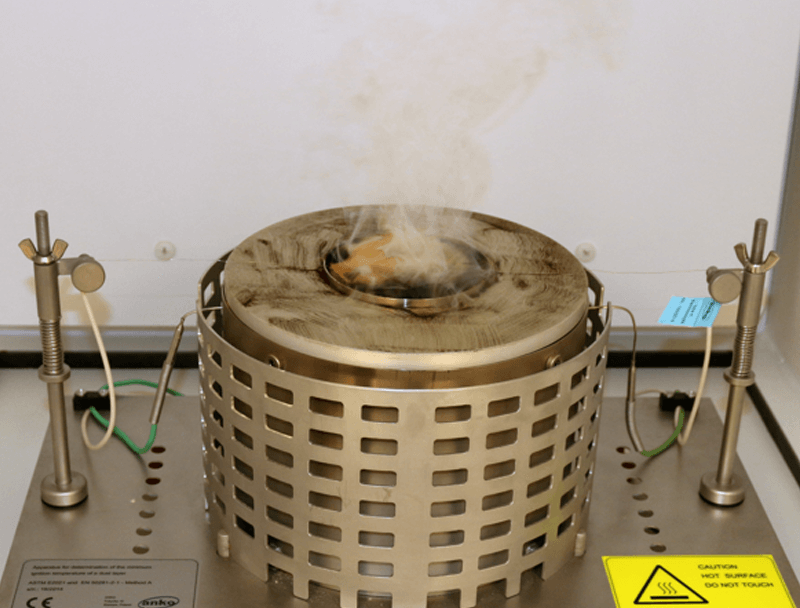Dust and Powder Flammability Testing
BS EN 50281-2-1 / ASTM E2021
The Layer Ignition Temperature (LIT) test is conducted to determine the lowest temperature at which a hot surface will ignite a powder when settled as a dust layer.
The material is placed onto an isothermally heated hotplate and formed into a 5 mm layer. Once an ignition temperature is observed the hotplate temperature is reduced and tested repeated with fresh material, until the lowest ignition temperature is established (LIT).

The LIT test is one of the three core tests for accessing a materials ignition sensitivity, particularly where ‘Avoidance of Ignition Sources’ is the ‘Basis of Safety’ for the operation. The data is required for defining the maximum operating temperature for electrical and non-electrical equipment used in areas where the test material is present.
Avoidance of Ignition Sources as a Basis of Safety, is often used for processes such as charging vessels from sacks, IBC’s or FIBC’s, pneumatic conveying, milling and tabletting operations to name a few. Many materials, that can create a flammable atmosphere, are found to be insensitive to ignition and therefore it is easy, practical and cost affective to ensure an ignition source capable of initiating a reaction is not present.
Related testing for ‘Avoidance of Ignition Sources’ are Minimum Ignition Energy (MIE), Minimum Ignition Temperature (MIT) and Electrostatic testing.

Dust Combustibility (Group A/B)
Read More
Minimum Ignition Energy (MIE)
Read More
Minimum Ignition Temperature (MIT)
Read More
Minimum Explosive Concentration (MEC)
Read More
Burning Behaviour
Read More
Explosion Severity (Pmax, Kst)
Read More© 2024 Sigma-HSE (India) Pvt Ltd | Registered in India No. U93000DL2014PTC266010 | Designed By WebClixs